The Fighter Read online
Page 7
‘Now we have made Italy we must make the Italians.’17 So said ex-prime minister Massimo D’Azeglio shortly after national unification was achieved. Again the statement suggests both a pessimistic take on the present and a hope in moral regeneration. Clearly this was fertile territory for a man who combined a creative use of extravagant rhetoric with a tendency both to bully and then to seek approval for having bullied in a positive way, a man who, having spent his early twenties in a state, as he saw it, of moral collapse, had then urgently cast about for a mission that would harness his energies and bring self-esteem. Nobody could have been more contemptuous of the Italian character than Mussolini – ‘a gesticulating, chatterbox, superficial, carnivalesque people’18 he called them – and nobody more determined to achieve the ‘conversion of the Italians’19 through a powerful collective vision, for which, like Leopardi, Mussolini uses the word illusion. ‘It is faith which moves mountains because it gives the illusion that mountains move. Illusion, is perhaps the only reality in life.’20
How, most of us will wonder, can someone believe in and act upon something that he also (unlike the fundamentalist) stands back from and refers to as an illusion? Leopardi considered this the paradox for modern man. It required constant labour and energy, he felt, to sustain an illusion. Fascism, a movement with no real content beyond its nation-building vocation, ‘constructs day by day’,21 Mussolini claimed, ‘the edifice of its will and passion.’ Asked to define the phenomenon in a few words he said it meant that ‘Life must not be taken easily.’22 He referred to himself as ‘the national mule’ carrying ‘heavy burdens’.23 Fascist artwork would portray him as a builder, digging the foundations of Italian civilisation, on his own, with a spade. ‘I am convinced’, Mussolini told a conference of doctors in 1931, ‘that our way of eating, dressing, working and sleeping, the whole complex of our daily habits, must be reformed.’24 It was a ‘fatica grandiosa’, he remarked, using the word that describes the mythic labours of Hercules.
Behind all this, then – the distance between the Italians as they are perceived to be and the modern, united, industrious nation they might become – lies the heroism of the impossible task. ‘The credo of Fascism is heroism, that of the bourgeoisie egoism.’25 It is as if, quite unlike Hitler, Mussolini was always half aware of being defeated before he started. Perhaps the most fascinating aspect of the Italian biographer Renzo De Felice’s classic seven-volume study of Mussolini, and what most distinguishes it from English biographies, is not so much his supposed sympathy with Mussolini as his shared understanding of this reading of Italian life. The same cultural trait is observable with Berlusconi and his Forza Italia party today. What has to be grasped is the Italian willingness to subscribe to an ambitious project of transformation while actively disbelieving that it can succeed. This is why it is not a major setback when a leader fails to deliver. Certainly Il Duce had ceased believing in his project, De Felice remarks, before he was halfway through his time in power. He had ‘dominated the masses like an artist’,26 but he had failed to change them. On the contrary, his ostentatious shouldering of all responsibility encouraged irresponsibility in his adoring people. ‘Fascism is nothing but a bluff’ Mussolini’s son Vittorio would tell his adolescent friends. ‘Daddy hasn’t managed to do anything he wanted to. The Italians … don’t give a damn about the revolution.’27 All the biographies mention Mussolini’s growing loneliness and melancholy as the hopelessness of his project emerged.
* * *
One thing, of course, that makes an illusion very hard to sustain is someone who reminds us of harsh reality, or supports a rival illusion. Having taken power, Mussolini became obsessed by propaganda and spent much of his time scouring the newspapers and reading police reports on friends and enemies. Neither he nor Fascism nor Italy must ever be presented as ridiculous. Having altered the electoral laws and deployed considerable thuggery to win a landslide victory in elections in 1924, he faced his first serious challenge in parliament. Socialist deputy Giacomo Matteotti accused him of widespread electoral fraud. Shortly afterwards, Matteotti was murdered. Having survived – only just – the ensuing scandal, Mussolini moved rapidly to turn his government into a dictatorship and the country into a one-party state. The lower house of parliament would eventually be closed and very tight control was taken of the press. ‘Our totalitarian will’, Mussolini declared in 1925, ‘shall be declared with still greater ferocity.’28 Everything would be ‘for the state, nothing outside the state, and no one against the state.’ Throughout the 1920s the myth of a militaristic, modernising Fascism was slowly consolidated; its component parts included the Roman salute (the handshake was banned), paramilitary youth movements, after-hours workers’ organisations, statues and bas-reliefs that recalled an imperial past and grandiose authoritarian architecture. Meanwhile police powers were considerably increased and thousands of communists and other agitators arrested.
But the illusion of totalitarian control was the greatest illusion of all. One thing, for example, that remained decisively outside state control was Mussolini’s stomach. Shortly after having survived the Matteotti crisis, Il Duce coughed blood and was afflicted by crippling stomach pains. An ulcer was diagnosed and he was put on a diet of no meat, no alcohol and abundant milk, with which he continued for most of his life. The pains, however, would return with some frequency. The biographies in question, while all suspecting a psychosomatic element to the problem (a post-mortem decades later would reveal no trace of an ulcer), do not seek to establish a pattern between the attacks and the kind of decisions and circumstances Mussolini was facing. Matteotti’s death was the first occasion when Mussolini himself was suspected of direct involvement in murder, when the criminal side of Fascism was seen by all for what it was, not a might-have-been or a figure of speech. Il Duce’s decision to grant a generous pension to Matteotti’s widow suggests he experienced a sense of guilt. Later, Mussolini would be especially afflicted by pain while involved in negotiating Italy’s aggressive military pact with Germany. It remains for some diligent researcher to establish whether these pains occurred at moments when Mussolini found it most difficult to reconcile the poles of ruthlessness and accommodation between which his behaviour oscillated. In any event, for a man of action who liked to have himself photographed playing vigorous sports or cruising Rome in a convertible with a lioness called Italia, to find himself bent double in pain and reduced on occasion to writhing on the floor was a significant setback. Naturally, none of this could ever be spoken of in the press, just as years later newspapers were forbidden to mention Il Duce’s age.
Also outside state control was the church. ‘It is impossible to ignore reality, however sad’29 Mussolini had once written to D’Annunzio, and he was aware that it was unrealistic to imagine that the vision that was Fascism could ever entirely replace Catholicism. They would have to live together. Mussolini replaced the Christian calendar date 1922 with the Fascist date, Year I, but for the duration of his regime allowed the different dates to be printed side by side on official documents. It was a classic example of his habit of allowing contradictions to persist unresolved. For years Catholicism and Fascism fought each other over who would have the right to run youth groups and indoctrinate future generations, but in 1929 Mussolini and the Pope nevertheless settled the profound disagreement between church and state that had been going on since Italy seized Vatican territory in the Risorgimento: the Pope agreed to recognise Italian sovereignty over Rome in return for a series of generous concessions. It was an extraordinary coup and brought Mussolini considerable international acclaim.
In general, as Farrell is eager to remind us and Bosworth is obliged to admit, Mussolini enjoyed an excellent foreign press throughout the 1920s. Many – including influential names like Churchill and George Bernard Shaw – saw him exactly as he wanted to be seen: a strong leader who had restored public order and modernised his country with a programme of public works and a policy of intervention to protect workers’ pay and conditions tha
t had spared Italy the class conflict that dogged other nations. The sacrifice of freedom of speech and, by now it was clear, democracy, was overlooked. Bosworth, however, is interesting in suggesting how little the country was in fact modernised, how few were the members of the old establishment, particularly in the army, who were replaced, how much of the perceived change, in short, had to do with propaganda. The extent to which Italy still lagged behind would be dramatically revealed in wartime.
‘He who does not feel the need to fight a bit of war’, Mussolini remarked, ‘is not in my opinion a complete man. War is the most important thing in the life of a man, like maternity in that of a woman.’ The curious use of ‘a bit’30 suggests Il Duce’s eternal ambiguity. One cannot imagination Hitler having slipped in this qualification. G. Bruce Strang’s On the Fiery March looks in meticulous detail at the dealings between the two men in the years that led to Germany’s invasion of Poland in 1939 and Italy’s declaration of war on an already desperate France in 1940. As in all these books, the story is fascinating if only because Mussolini’s behaviour would appear to defy explanation. From 1922 to 1935, despite all its menacing rhetoric, Italy had hardly misbehaved on the international scene. Then in 1935 it invaded Ethiopia, in 1936 it intervened in the Spanish Civil War and was largely responsible for Franco’s victory in 1939. In 1938 it invaded Albania and in 1939 it signed the Pact of Steel with Germany, an aggressive military alliance whereby if one signatory launched a war of expansion, the other was bound to join in. How far was all this the consequence of a long-term plan, of ideology or of opportunism? Or did it reflect a midlife crisis of both Fascism and Il Duce?
In Farrell’s view, France and Britain were largely responsible for Mussolini’s decision to side with Hitler. Italy was right to feel shortchanged by the Treaty of Versailles and trapped inside the Mediterranean by British and French power, to challenge which it was understandable that it should seek to expand its colony in Libya and open a new one in Ethiopia. At the same time, Italy was a natural ally of Britain and France against German expansionism, in that an eventual Anschluss of Austria by Germany would threaten Italy’s dubious claim to the predominantly German-speaking South Tyrol. There was also the fact that on first meeting, Mussolini despised Hitler and thought his anti-Semitic policy madness. The British and French thus behaved foolishly in pressing for US sanctions in reaction to the invasion of Ethiopia in 1935 (despite the 500,000 Ethiopians killed with nerve gas). Their opposition to Mussolini’s involvement in the Spanish Civil War showed that they hadn’t understood as profoundly as Mussolini the dangers of Bolshevism. In need of allies, Il Duce had to go to Hitler.
Strang refutes this interpretation. He shows how, despite Mussolini’s initial hostility to Hitler, their dealings rapidly took on a quite different tone from his negotiations with the British and French as Il Duce began to see in the rise of the Reich a fulfilment of his Darwinian vision (and personal dream) of the vigorous, recently unified and now Fascist nations prevailing over the exhausted and decadent capitalist democracies of Britain and France. The decision for Mussolini was not, Strang shows, between opposing camps – he knew at once where he stood over that question – but whether the alliance with Hitler would be restricted to rhetorical support or arrive at full-scale military conflict.
All the same, precisely because Strang’s approach is limited to a close examination of diplomatic exchanges, he cannot hide his consternation and puzzlement at the carelessness with which Mussolini and Galeazzo Ciano, his young foreign minister and son-in-law, accepted a German draft of the Pact of Steel without inserting the safeguards they had previously discussed, and this despite the fact that Hitler, with his sudden, unannounced invasions of Austria and Czechoslovakia, had already shown himself to be an extremely fickle ally. Neither opportunism nor ideology could explain the blindness with which Mussolini placed himself in Hitler’s hands.
One clue to understanding Mussolini’s behaviour is his introduction of the anti-Semitic Race Laws in 1938. Until that point, despite occasional anti-Semitic statements, Mussolini had denied the existence of a Jewish problem in Italy, criticised Hitler’s anti-Semitism, allowed Jews to be members of the Fascist Party (thousands were enrolled) and encouraged his Jewish mistress Margherita Sarfatti to write an adulatory biography of himself. Now Jews were to be excluded from public life and forbidden to marry ‘Aryan’ Italians.
In his partial biography, Mussolini: The Last 600 days of il Duce, Ray Moseley declares himself puzzled and reaches the conclusion that the Race Laws were the merest opportunism, a cheap way for Il Duce to ingratiate himself with Hitler. Neville, likewise mystified, reaches the same conclusion as it were by default: if it isn’t anything else, it must be opportunism. But this interpretation makes no sense. Hitler had put no pressure at all on Mussolini to introduce a Jewish policy similar to his own and these were days when Mussolini had no need to ingratiate Hitler, since Hitler’s need of his Italian ally was urgent indeed if he was to pursue his adventurous policies in Czechoslovakia and Poland. On more than one occasion Mussolini had spoken of the folly of arousing the opposition of international Jewry.
Farrell has a different answer. The conquest of empire in Ethiopia had raised the question of racial consciousness, he claims. The Italians had to be fit to rule. To do this they must eliminate their sentimental and bourgeois tendencies. ‘It was the Jewish psyche or spirit – the epitome of the bourgeois spirit which he scorned as la vita comoda – that he wanted to stamp out, not the Jews.’31 This explains, Farrell says, the exemptions from the Race Laws extended to those Jews who had served loyally in the army or joined the Fascist Party before 1922. ‘Mussolini’s mission … was to transform the Italians into Italians. The Jews became victims of this bigger process.’32
Aside from one’s unease with Farrell’s attempts to apologise for Mussolini (the terrible death toll in Ethiopia is partly excused by the fact that the Ethiopians were barbarous slave traders), this too makes no sense. If Mussolini wanted to stamp out the bourgeois lifestyle, he could have begun with those like Ciano who dressed expensively and played golf when they might more usefully have been working, or with the rich industrialists of Milan and Turin. He could have altered fiscal policy and limited the availability of consumer goods. As it was, he must have been aware that many of the Jews who would suffer from his laws were hardly bourgeois at all.
Bosworth comes closest to a convincing explanation. He notes that Mussolini’s growing envy of Hitler and Nazism had intensified his frustration that ‘he himself had not been an iron-hard engineer of human souls.’33 Aware, particularly after his visit to Berlin in 1937, of the mobilising power of racism, Mussolini returned to Italy where from now on he would be ‘trying very hard to be wicked’.34 In this scenario, the anti-Jewish policy was, yes, as Farrell would have it, aimed at toughening up the Italians (they must become ‘tough, implacable, hateful’),35 but more out of desperate emulation than because of any beliefs about the nature of the Jewish spirit.
The irony, if one accepts this explanation, is that Mussolini was indeed only trying to be wicked, for as Bosworth points out, until the German occupation of 1943, although Italian Jews were now ‘persecuted in ways which they had not imagined when, in considerable majority, they approved Fascism: they were not, however, killed.’36 Mussolini spoke of setting up concentration camps, but did not do so. Nor did he punish those, including his own family, who protected Jews, nor even those members of the Italian army and bureaucracy who, after the war had begun, saved Jews from Nazi persecution in France and Croatia. What was going on?
On 29 November 1938, after Race Laws were announced, the Jewish publisher and Fascist Angelo Fortunato Formiggini jumped to his death from the cathedral campanile in Modena. In a letter to Mussolini he wrote: ‘Dear Duce … You have gone mad … deep down you pain me, because you have fallen into a trap placed for you by destiny.’37
Let us try to give a prosaic sense to this most pertinent observation. Until 1935, in a Fascism tha
t, beyond restoring law and order through repression, was largely a matter of image and propaganda, Mussolini had found a strategy that kept the contradictory impulses of his personality in equilibrium: portrayed as heroically implacable, he was popular because, after all, for most ordinary people not much had changed and not much was required of them. The emergence of Nazi Germany, partly through the real opportunities it offered for altering the status quo, but above all through the person of Hitler, upset that equilibrium. Here was a man who really was ruthless and implacable, who really hurried history onward to its cruellest Darwinian convulsions.
Returning from Berlin in 1937, greatly impressed by the Nazi parades he had witnessed, Mussolini introduced the goose step to Italy. At the same time he suffered a severe attack of his stomach problems; they would continue to assail him throughout his many attempts to emulate Hitler in 1938 and 1939. He also suffered from acute indecision. Clearly the more accommodating side of his personality was still active. And indeed, however demeaning and humiliating the Race Laws were, there was no Kristallnacht in Italy. Impelled to transform himself and his compatriots into ruthless empire builders, history’s winners, Mussolini at some deep level could not want, or at least not want close to home, or not for sustained periods, the evil such ruthlessness required.
Once Mussolini had joined the war (at a moment when he felt Hitler could not lose and hence was convinced as ever of a rapid victory), there was one last attempt to equal the man who had somehow stripped him of his self-respect. Nothing else can explain the strategically, politically and ideologically absurd invasion of Greece. When that failed, abjectly, Mussolini handed more or less complete control of the war to Hitler in the same way he expected underlings to cede control to him; he recognised, that is, that in this particular relationship he must take the subaltern position. Hence Moseley’s account of Mussolini’s last days presents us with the pathetic picture of a man who seems relieved to have renounced the struggle with himself and is secretly pleased every time Hitler is beaten, despite the fact that such defeats could only bring his own demise nearer.

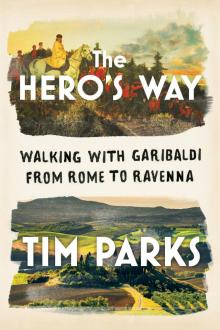 The Hero's Way
The Hero's Way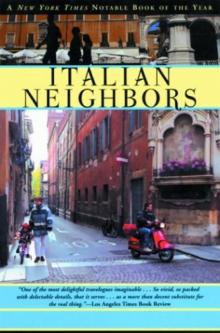 Italian Neighbors
Italian Neighbors Goodness
Goodness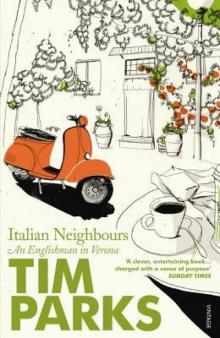 Italian Neighbours_An Englishman in Verona
Italian Neighbours_An Englishman in Verona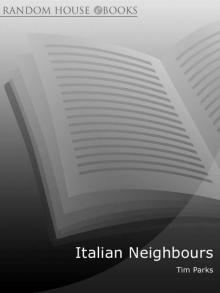 Italian Neighbours
Italian Neighbours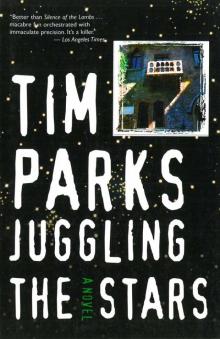 Juggling the Stars
Juggling the Stars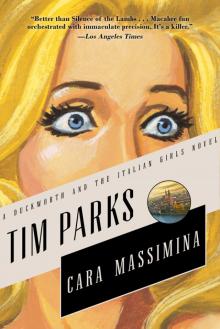 Cara Massimina
Cara Massimina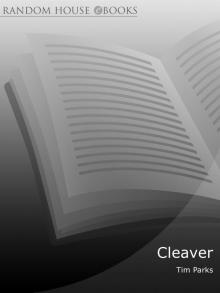 Cleaver
Cleaver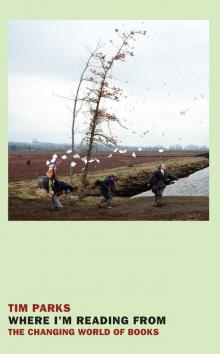 Where I'm Reading From
Where I'm Reading From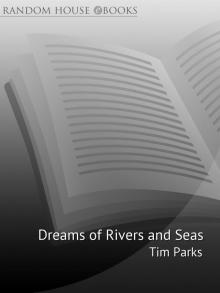 Dreams of Rivers and Seas
Dreams of Rivers and Seas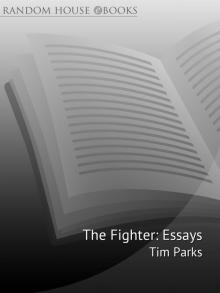 The Fighter
The Fighter In Extremis
In Extremis Painting Death
Painting Death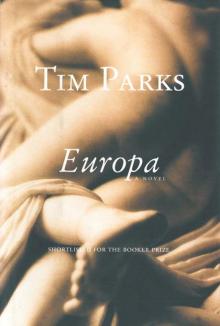 Europa
Europa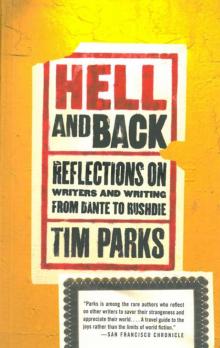 Hell and Back
Hell and Back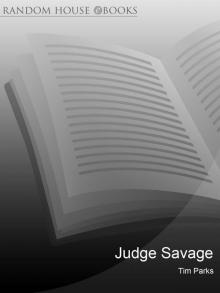 Judge Savage
Judge Savage Thomas and Mary
Thomas and Mary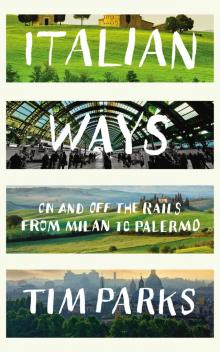 Italian Ways
Italian Ways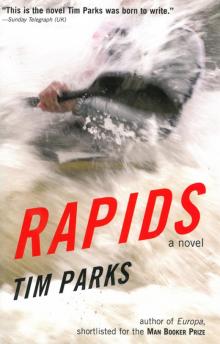 Rapids
Rapids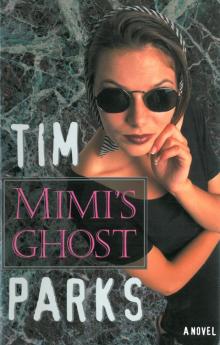 Mimi's Ghost
Mimi's Ghost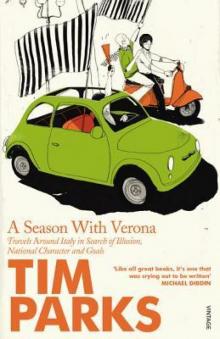 A Season With Verona
A Season With Verona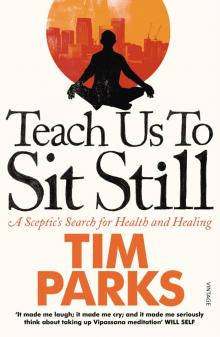 Teach Us to Sit Still
Teach Us to Sit Still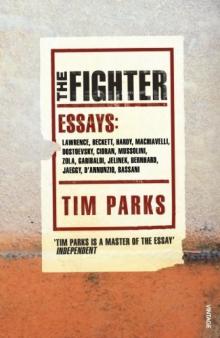 The Fighter_Literary Essays
The Fighter_Literary Essays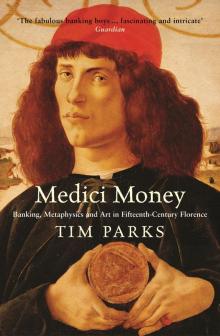 Medici Money
Medici Money